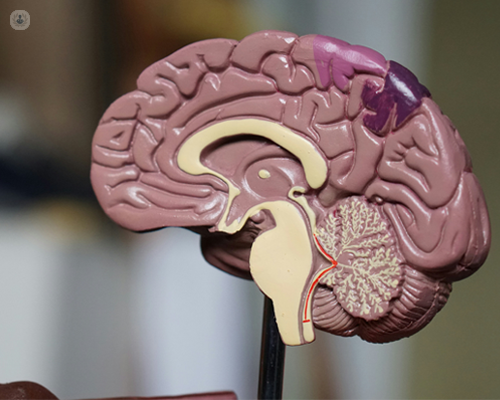Cerebral small vessel disease and why it's so important
Escrito por:Even though cerebral small vessel disease is very common, you may never have heard of it. It affects most older people but should not be thought of as part of the normal ageing process. It can also be seen in younger adults.
It’s entirely possible to have it yet not know about it. Very often small vessel disease goes undetected. But if it is identified then it's sensible to think about how to reduce the risk of it causing future problems.
Here to provide an in-depth look at this condition is leading consultant neurologist and vascular neurology specialist Professor Hedley Emsley.

What is small vessel disease?
Small vessel disease is the most common form of cerebrovascular disease, that is, blood vessel disease of the brain. Damaged small blood vessels in the brain can cause white matter lesions and other signs that are seen on brain scans. Small vessel disease is often caused by high blood pressure and diabetes mellitus, but there is a number of other causes.
What problems can it cause?
Small vessel disease causes around a quarter of all strokes. But stroke is the tip of the iceberg. Small vessel disease is also the second most common cause of dementia. And there are many more people with small vessel disease who will gradually develop problems such as difficulties with thinking or walking.
What is small vessel disease not?
Although small vessel disease can cause stroke, it’s not always appropriate to automatically label someone with small vessel disease on a scan as having had a stroke. Stroke is a clinical event causing a sudden loss of function such as weakness or loss of speech. People labelled incorrectly with stroke can face unnecessary difficulties with issues such as driving and insurance, or may worry unnecessarily.
How is small vessel disease identified?
Small vessel disease may be identified as a result of someone having a stroke or developing dementia. Otherwise, it tends to be identified on a brain scan. Signs of small vessel disease are often picked up on brain scans done for other reasons. For example, most brain scans performed for headache don’t show any sinister cause. But scans often show incidental findings, and small vessel disease is the commonest of these, particularly in older adults.
What is done once small vessel disease has been found?
Very often, not much. By comparison with what might happen if a small cyst or benign tumour is found on a brain scan, when people will usually be referred on and have further scans, small vessel disease on a brain scan often doesn’t trigger any action. This can be the case even if the small vessel disease is quite severe. This is a pity because the opportunity to reduce the likelihood of future problems from small vessel disease may be missed.
What should be done?
Right now, clinical services tend to be organised around the complications of small vessel disease such as stroke or dementia. More needs to be done to make the most of opportunities for prevention and to ensure appropriate treatment. It’s important to consider the type of small vessel disease. Most cases will be due to vascular risk factors such as high blood pressure. But there are other conditions such as cerebral amyloid angiopathy, genetic disorders or other causes, which are often managed differently.
What can you do about it yourself?
It's sensible to maintain a healthy lifestyle, avoid being overweight, taking regular exercise and eating a healthy diet. If you smoke, it’s sensible to stop. It’s also sensible to make sure that treatable conditions such as high blood pressure are recognised and treated and to make sure conditions such as diabetes mellitus and high cholesterol are under control.
If you require expert neurological treatment for cerebral small vessel disease, arrange a consultation with Professor Emsley via his Top Doctors profile.


